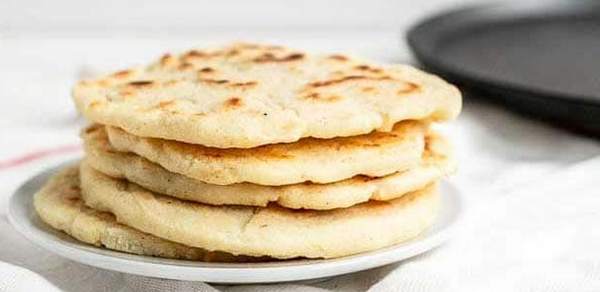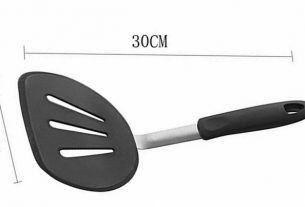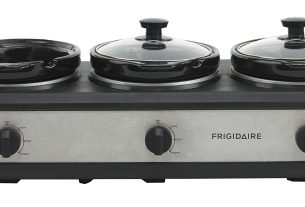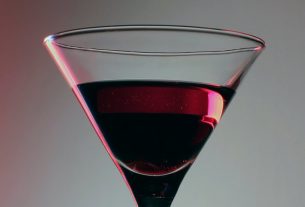You might at a point considered to make arepas by yourself at home and you must understand that you need to give the type of flour you use maximum attention. Arepas are considered to be extremely versatile as they can be used as a full dish, side dishes, snacks, or appetizers for your breakfast, lunch, and dinner. They are also available in numerous ingredients and flavors but you are not supposed to use different types of flours for your arepas.
The type of flour that you want to use to make your arepas is very important if you wish to make sure the Venezuelan and Columbian meal you want to prepare is the best version. The flour you will use is the major ingredient that will give you the arepas flavor.
What we want to check out in this guide is to show you the origins and history of the absolute best flour you are to use for your arepas and why you should importantly use this particular flour and not other types. We will also check out where the flour can be found and purchased and we will check out some questions related to it.
The question is what the absolute best flour you can use for arepas. Masarepa is also known as harina precocida and masa al instante is the best flour you can use for arepas and it is a refined and pre-cooked type of corn flour that is referred to as harina de maiz refinada precocida in Columbia.
There are several generic sets of brand names associated with this cornflour in particular and they are Goya, Harina Juana, Areparina, and Harina PAN that are usually sold inside big boxes grocery stores in the USA and Europe.
Best Flour for Arepas: Origin and History
Centuries ago, a variety of tribes in Columbia and Venezuela made their first arepa by making use of ground corn flour which has remained the main staple when preparing the meal since then, at least by those people dwelling in those places. Arepas are also called daily masa bread and individuals across every socio-economic class eat it every time in a day. The most essential portion of the arepa meal is corn flour because the name was gotten from the term “erepa” referred to as the indigenous term for corn.
Until the days of the 1950s, they usually eat arepas primarily as side food and bread. However, over the year, it is now more popular and people have started being creative with the meal. They were previously referred to as tostadas, but you can now call them arepa Rellenas or arepas. The fillings for your arepas generally vary and you will now find numerous recipes available but the major ingredient that is Masarepa has not changed.
Masarepa for arepas was previously made by soaking the corn dried inside water and manually getting the grains pounded until the outer lining and seed germ were removed, this was before the machinery that helps in the process of grain-refining was developed. The remaining portion of your corn then gets cooked and also grounded making it how the first arepas were originated.
In recent times, machines have been produced to perform the process of refining foods and grains in industries. If you, however, will like to, you may still decide to make your flour manually. You will have to first boil your corn inside water containing lime (chemical) that helps to loosen all the hulls and then you should drain the water before you place the corn inside a very large wooden container ensuring the corn is kept moist by adding water as needed.
You will then need to pound your corn by using your wooden mallet until the kernels are separated from the hulls (germs attached). The corn should then be swished in water for the hulls to be washed away and then you can finally take the corn kernels to cook, ground them before making them become dough.
Making your Masarepa could be a bit labor-intensive and nowadays, it is usually gotten from the store and they are usually prepared by hulling the corn dry, removing it from the germ, and seed and then getting the kernels cooked, grounded up, dried before being packaged. The Masarepa you will get will have a taste like the main thing and it is why you should purchase your masarepa before you prepare your arepas.
Why Other Flours Don’t Work
Most people usually make mistakes whenever they hear they will need to use refined and precooked corn flour for making their arepas and they usually assume that the Mexican variety of cornmeal (masa harina) will work in similar ways or the regular cornmeal we have around will do the job.
You can always expect people to make these assumptions because cornmeal and masarepa are quite similar and their relationship is considered to be analogous to that between flour and bread crumbs. Cornmeal and masarepa are usually made with similar basic stuff with cornmeal getting milled raw but masarepa being cooked fully before it is milled. There will be a difference in their texture when you introduce them to your dough.
Cornmeal will not absorb liquid when mixed with it and it will just sit there, however, masarepa usually absorbs liquid giving your dough a texture that is putty-like. The dough which is putty-like can then get easily formed to a variety of shapes like muffins that cannot be done by using the regular cornmeal.
When the assumption that using the Mexican variety of cornmeal (masa harina) will work; truthfully masarepa is similar to masa harina but they are not the same. You can consider Masa harina to be a corn dough treated using lime to remove the germs and also the outer lining before drying and grounding into finer cornmeal. The primary main ingredient in several common Mexican meals such as gorditas, tortillas, and pupusas is the fine cornmeal.
Masarepa, however, is prepared by using a large corn kernel that possesses large and starchy endosperms, making the flour much starchier than the masa harina that is used for tortillas. Masarepa will have a much milder taste because the preparations do not involve using chemical lime. Masarepa is perfect for getting deep-fried or pan-cooked into arepas that you will enjoy.
Masarepa: Where you can purchase it
You will usually find Masarepa in one of these brands in the grocery stores: Goya, Harina Juana, Areparina, and Harina PAN and they are all real masarepa that you can use to make your arepas into a beautiful meal.
eBay
People usually sell the cornflour brand Harina PAN on eBay. You will get to buy it at a reduced price and the shipping time is also faster.
Costco
This is a very big store chain found in the United States. You will be able to buy your Harina PAN from Costco but you will only get to see it in locations only with a large Latin population like Miami.
Amigofoods
This is an e-commerce only food store for Latin meals where you can buy several Latin food products such as Harina PAN that you can use to make your arepas.
Walmart
Walmart seems to sell everything nowadays and masarepa can also be found on it. You will find up to 12,000 locations of Walmart across the globe and you will not have any issue getting one where you can buy a brand from Harina PAN that you will use to prepare your arepas.
Amazon
If you want to take arepas but you don’t want to go and it yourself, you can order the flour on Amazon. You will find the enriched flour by Goya that is equivalent to precooked masarepa. You will also get to see the P.A.N by the brand Harina PAN that is 100% free of gluten, produced in the United States and it is an equivalent to the precooked masarepa.

Related Questions
Can I Still Make Arepas Using Regular Cornmeal or Masa Harina?
You can make your arepas with regular cornmeal or masa harina in as much as you can follow the right procedure for cooking it, you will still have edible arepas. The arepas will, however, have a differing taste that will not be mild enough for using elaborate spices and meats to mix it. You will also get somewhat of a much more flimsy texture because it will be less starchy than masarepa.
Is there a Difference Between using White Corn Flour and Yellow Corn Flour?
You will not see a difference between when you use yellow cornflour and the white variety, It is all about your personal preference of whichever one you prefer to choose. However, some people do argue that the color they have chosen is the right option.
Yellow corn flour is a little bit more tangy or bitter than the white variety but when considering arepas, this is not supported because it might just be the effect of placebo that is working. Most masarepa, however, is sold as the white variety and it means you can use any of the two.


